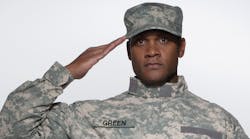“Embrace the change!” is one of the most overused business expressions, and typically it refers only to the change that organizational leaders want to occur. Usually, these are changes that, as leaders, we want to initiate for our own personal benefit or for reasons that are justified according to our own visions of the future. This style of “leadership” is really careerism masquerading, poorly, as strategy. By telling others to “embrace the (my) change,” we serve ourselves, often selfishly, to advance our own futurist perspective, and often without a true strategy of any concern for organizational well-being. True “change leadership” embraces others in the organization as much as it does the change that is occurring.
“Change leadership” happens when we stand up, help others become successful, and confront the change that we do not want or did not expect. This sort of change leadership is especially common in the military, when seemingly great plans fail in an instant and leaders’ own personal greatness emerges to confront adversity head-on. Overcoming those changes we do not want is a hallmark of true military leadership. Embracing changes that we do not want is necessary to overcoming them, and thus necessary to succeeding as a leader.
During the First Gulf War (1990-1991), Major Rhonda Cornum, a flight surgeon and part of a U.S. Army Medical Evacuation (MEDEVAC) helicopter team, was shot down by Iraqi forces. Maj. Cornum had expected to treat wounded service members, but instead she was captured and endured confinement, severe injuries, and incredibly abusive mistreatment by her Iraqi captors. Clearly, this is an example of unwanted change.
Yet, Cornum maintained her dignity and professionalism as a military officer and continued her service, rising to a high-ranking officer in the U.S. Army. Brigadier General (Retired) Cornum is a great military leader who embraced the change she did not want to become the leader she knew she had to be, to triumph over the change that she did not want. Even today, almost 30 years distant, Rhonda Cornum is a leader to admire and learn from.
Military training emphasizes the centrality of embracing change that we did not ask for by drawing on personal integrity, professionalism, a focus on people, planning, initiative, and honesty to triumph during adversity. The following five strategic principles will help you gain that emphasis, too.
1. Set goals, but commit to success. At the end of 1950, U.S. Marines were nearing the end of a long fight up the Korean peninsula, where they expected to reach the Yalu River separating Korea and China. Instead of victory, the Marines were attacked from all sides and forced to retreat from the Chosin Reservoir under intense assault in sub-zero temperatures.
Those Marines did not run. Instead, they recognized that the situation had dramatically changed and that they needed to “attack to the rear,” instead of attacking the other direction. True leaders lead, react, re-plan, and care for their teams when the completely unexpected occurs. The Marines turned an expected military catastrophe into one of legendary performance that is celebrated and honored today.
2. Voice your opinion when the situation is bad. In 2007, a bright U.S. Army officer, Lieutenant Colonel Paul Yingling, wrote a scathing critique of the lack of quality general officers leading the wars in Iraq and Afghanistan. Yingling had confidence in the ability of his soldiers, he believed in the U.S. Army as an institution, and he knew that the complexity of the conflict in Iraq and Afghanistan was challenging the U.S. military strategy. Yet, as a leader Paul Yingling chose to voice dissent by declaring that the U.S. Army’s senior leadership could (and must) do better.
In military organizations, not all heroism is displayed on the battlefield. Speaking out in order to establish open and honest conversation during times of unexpected change is vital to finding and implementing successful solutions to critical problems.
3. Put people before plans. The U.S. military is a planning organization. Yet, before committing to any plan, the U.S. military commits to its people: soldiers, sailors, Marines, and airmen. The very first step in showing its commitment to military personnel is to send everyone to difficult and complex training, with standards for performance that must be met before any person leaves training to join a deployable military formation.
There has been much discussion of allowing women to join direct ground combat units. However, it’s much more important to ensure that the U.S. military maintains standards and expectations for combat units, that women then must meet in order to be admitted to such units. Strong, confident, and well-trained people are the foundation of any successful plan.
4. Strong plans allow for individual initiative. During the twilight hours on June 5, 1944, the day before the D-Day landings at Normandy, American and other Allied airborne forces parachuted and rode gliders into the French countryside. The mission had been planned, rehearsed, and resourced for months. Yet, in the first few hours, all was chaos and confusion. Paratroop units were dropped into the wrong areas, critical leaders were killed, and some vital equipment was lost in the darkness. Yet, hours after a confusing night, the Allied airborne forces were attacking Nazi reinforcements, holding critical bridges, and helping the seaborne landing force move ashore.
The Allies started with a strong plan, but when confusion took over soldiers at all levels acted with initiative, confidence, and resolve to get the plan back on track. They had been trained to do so. The planning allowed for it. Initiative plus strong plans are a winning solution in even the most chaotic events.
5. Humility, honesty, decency, and generosity are key leadership traits. Pick a great U.S. military leader of World War II. I’m going with Major General Jim Gavin, one of the youngest U.S. Army generals, and the commander of the famed 82nd Airborne Division. “Jumpin’ Jim” Gavin to his soldiers — because of his four combat jumps and because he always jumped with pack, rifle, and grenades, just like the rest of his military unit. Jim Gavin was incredibly successful, yet he was humble, honest, and decent to his charges. He led by example in all things. Even in conflict, Maj. General Jim Gavin demonstrated that great leaders are caring, humble, and respectful leaders.
These examples demonstrate that during challenging times, true leaders quickly recognize and react to unexpected events, allow open and honest communication, focus on people, create strong plans that encourage initiative, and maintain humility, decency, and generosity to others. No matter the type of change we encounter, we can and should choose such attributes of military leadership that embrace success during chaos.
Chad Storlie is a retired U.S. Army Special Forces Lieutenant Colonel with 20+ years of active duty and reserve service in infantry, Special Forces, and joint headquarters units. He is an adjunct lecturer of marketing at Creighton University, a mid-level marketing executive, and the author of “Combat Leader to Corporate Leader” and “Battlefield to Business Success.” Contact him at [email protected], or visit www.CombatToCorporate.com









